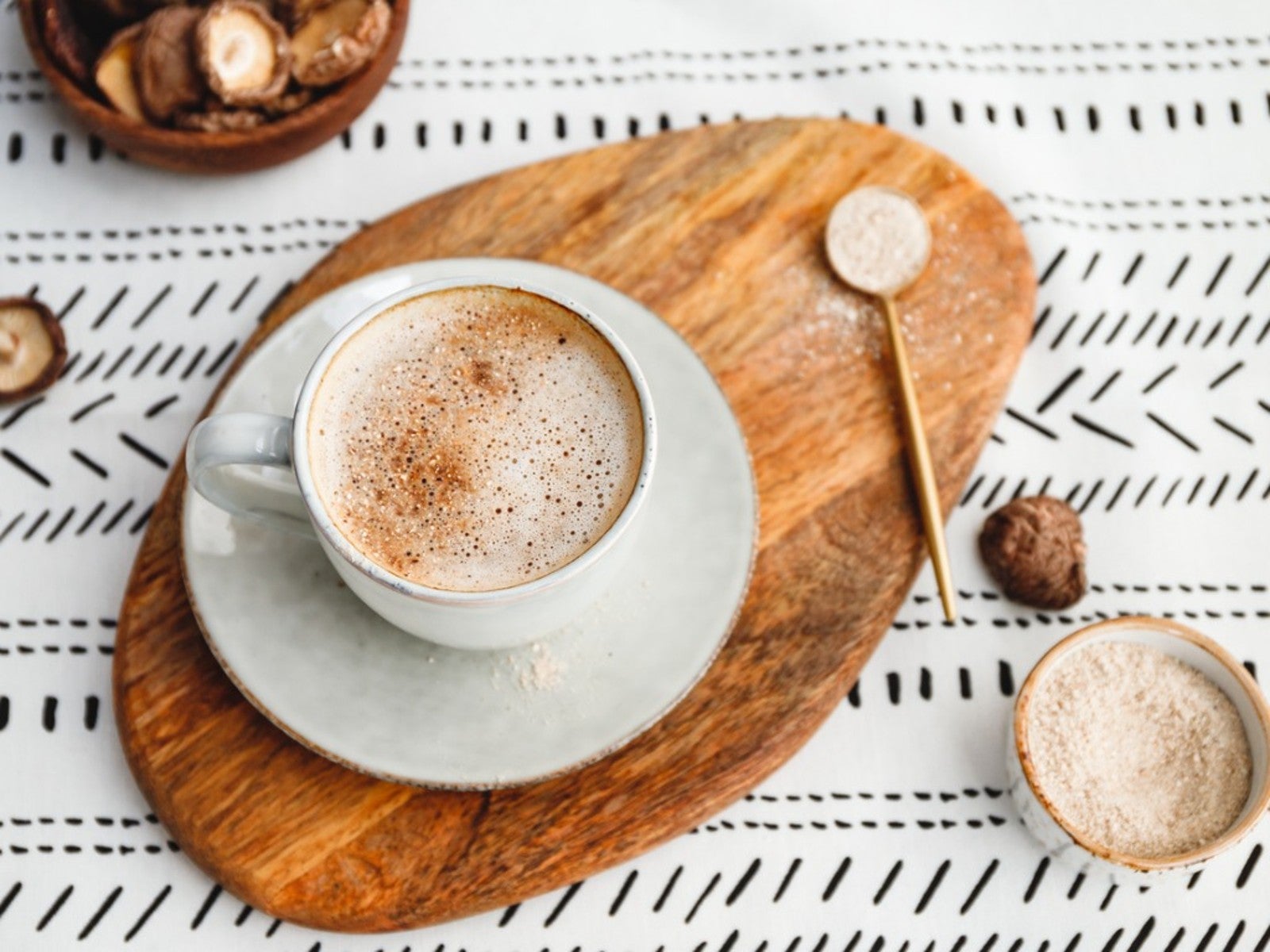Make Your Own Mushroom Coffee From Homegrown Fungi


If fresh brewed coffee is part of your morning routine, you might be interested in the benefits of mushroom coffee. With about half the caffeine of your regular cup of joe, mushroom coffee can reduce the jitters, make you feel less anxious, and help you sleep better.
What is Mushroom Coffee?
Mushroom coffee is a blend of ground coffee beans and mushroom powder. Known as functional mushrooms, these fungal species are valued for the health benefits they provide as well as their nutritional value.
From a nutritional standpoint, adding mushroom powder to coffee provides fiber and complex B vitamins to the daily diet. Most functional mushrooms contain niacin, riboflavin, and pantothenic acid, which work with the B vitamins in coffee beans to boost the body's ability to release energy from fat.
The health benefits of functional mushrooms come from antioxidants like polyphenols and carotenoids. These are believed to support immune health, reduce inflammation, and prevent vitamin A deficiency. These mushrooms also contain polysaccharides, which are complex carbohydrates that support intestinal flora.
So, what does mushroom coffee taste like? Surprisingly, a lot like regular coffee. The mushrooms give it an earthy flavor that is slightly more bitter than regular joe. More importantly, coffee drinkers can reduce their consumption of caffeine without turning to decaffeinated brews, which may contain trace amounts of the methylene chloride used in the caffeine extraction process.
How to Make Mushroom Coffee
Commercial mushroom coffee brands are available online, but often at a premium price. Creating your own mushroom coffee can not only save money but allows consumers to create a custom blend with the type and quality of ingredients they prefer.
Brewing mushroom coffee is as simple as purchasing mushroom powder and pairing it with an equal amount of your favorite brand of ground coffee. If you grind your own beans, add mushroom powder after the beans are ground. You can adjust the ratio of coffee to mushroom powder to suit your taste.
Sign up for the Gardening Know How newsletter today and receive a free copy of our e-book "How to Grow Delicious Tomatoes".
Then, simply brew your mushroom powder and coffee ground mix as you normally would. Use the same amount of mix as you'd use when brewing straight grounds. Mushroom coffee can be brewed in an old fashion percolator or a French press. Use it to create your favorite latte or cappuccino. Or add peppermint or pumpkin spices to create a seasonal mushroom coffee recipe you're sure to love.
Growing Your Own Mushrooms for Coffee
In lieu of buying these specialty mushrooms, you can grow or harvest your own. Here are the most popular functional mushrooms added to coffee:
Chaga – This fungus is not what one thinks of when it comes to mushrooms. Chaga is a very slow growing, hard black growth that looks like a burnt area on the birch trees they inhabit. Growing chaga at home is nearly impossible, but you may be able to locate and harvest wild chaga.
Lion's Mane – As the name suggests, Lion's Mane looks like a tuft of long white needles that resemblance a clump of hair. It can be grown inside on hardwood pellets or outdoors on a stump of beech or sugar maple.
Reishi – These shiny bracket fungi can be found in the wild on dead or dying hardwood trees. Reishi can also be cultivated both indoors and outside in shady spots with high humidity. Kits and inculcate are readily available online.
Turkey Tail – Emerging from living or dead trees, this thin shelf fungus has concentric rings of color that resemble the tails of wild turkeys. Turkey tail can be harvested in the wild or grown at home on hardwood stumps or recycled Christmas trees.
Unlike culinary mushrooms, functional mushrooms are hard and largely inedible in their natural state. Never fear, as learning how to make mushroom coffee powder is as simple as chopping these mushrooms into smaller pieces, then pulverizing them in a food processor or spice grinder. Store the resulting powder in a sealed jar at room temperature until needed.

Laura Miller has been gardening all her life. Holding a degree in Biology, Nutrition, and Agriculture, Laura's area of expertise is vegetables, herbs, and all things edible. She lives in Ohio.